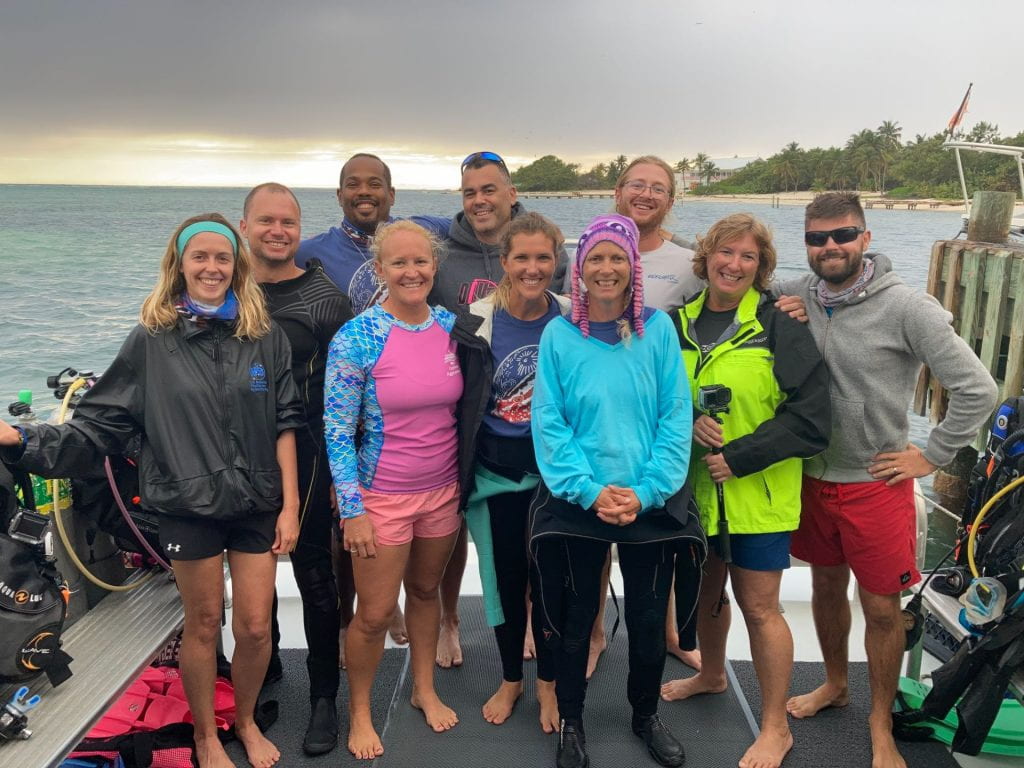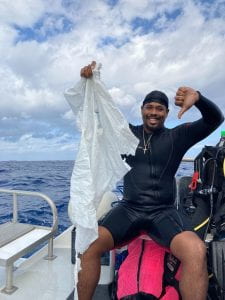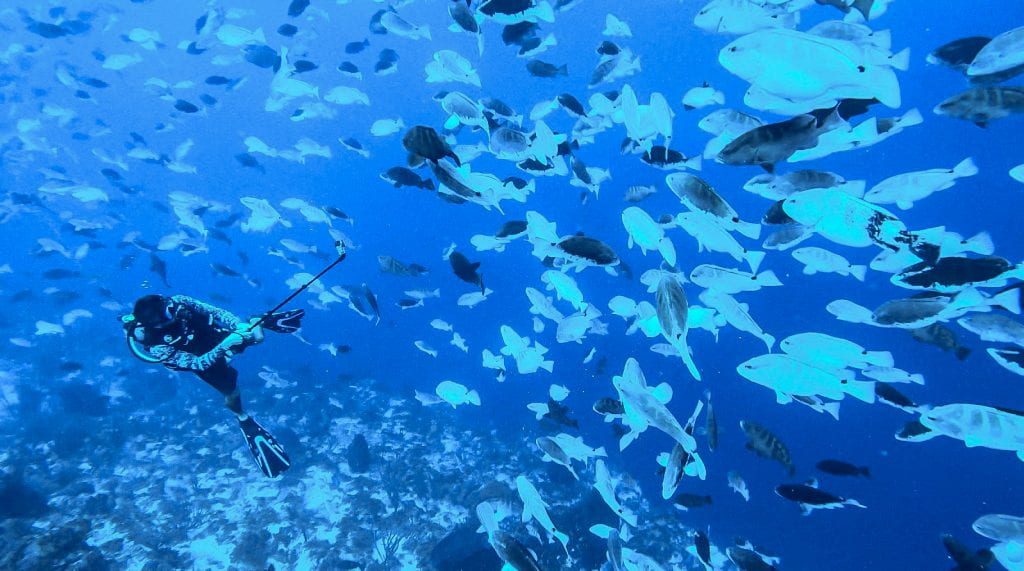This evening, January 31st, marked three evenings since the Winter Full Moon on January 28th. Any guesses for whether the Grouper Moon Project research team on this evening’s dive saw any Nassau grouper spawning?
Monthly Archives: January 2021
Plastic Pollution
Today at the Nassau grouper spawning aggregation site, we sadly found a large plastic bag floating in the ocean. Paul Chin from the Grouper Moon Team was able to remove the bag from the ocean.
Plastic pollution is an ever growing problem around the world. Seeing large plastic bags like this in the ocean is devastating as sea turtles, fish, or other marine life could easily become entangled or ingest the plastic.
It is estimated that eight million tons of plastic enters our ocean every year, which is in addition to the estimated 5.25 trillion pieces of plastic already in the ocean.
You can help to reduce plastic pollution in our oceans by refusing items that come in single-use plastic packaging, recycling, participating in beach cleanups, and educating others about plastic pollution. Together, we can make a difference.
Research Methods
I arrived in Little Cayman to join the Department of Environment Grouper Moon Team Friday after school. So today was my first official day with the team and underwater with the Nassau grouper! The seas were a bit rough today, but what a day we had! Each day there are three dives – a morning dive that leaves the dock at 8 am, an afternoon dive at noon, and an evening dive at 4:30 pm.
There are three main tasks for the team of divers on each dive. The first is a research method called ‘Fish Faces.’ This year instead of physically tagging the grouper to obtain an estimate of the population size, researchers are obtaining images of individual grouper ‘faces’ or the sides of the grouper. Each grouper has a pattern that is unique to only him or her, sort of like our fingerprints! Using a GoPro on a long selfie stick, we take videos of as many fish as we can so that the researchers can use AI software to identify each fish. Today there were many fish, in the thousands! Some were up in the water column against the edge of the coral reef wall. Other grouper were resting at the bottom of the reef along the sea floor. Today we had three buddy teams, so a total of six divers, doing ‘Fish Faces.’
The second task that a buddy team of divers is assigned to is ‘Stereo Video.’ The Stereo Video is a specially designed device to take length measurements of the grouper. It is essentially a long stick with a GoPro on each end. This device is used to measure the length of different Nassau grouper at the spawning aggregation site. Length data is important because the larger the fish are, the more eggs the fish will have. Also, the fish get bigger as they get older, so this is one way to determine how the population of fish is growing.
The third research method that we are using is a ‘Video Pan.’ This is probably the most exciting! Two divers are propelled through the water on underwater scooters and dive the entire length of the band of fish, sometimes this can be longer than 100 yards, the length of a football field!
We are expecting the peak spawning to either be on Sunday or Monday, so stay tuned for tomorrow’s post!
Grouper Moon 2021
Hi Everyone! My name is Amanda Brown, and I will be joining the Cayman Islands Department of Environment (DoE) and Reef Environmental Education Foundation on this year’s Grouper Moon Project in Little Cayman. 
I am a grade two teacher at Cayman International School on Grand Cayman. In Grade 2, my students do a Project Based Learning Unit on the ocean, and our driving question is, “How are we connected to the sea?” Engaging students in the Grouper Moon Project each year is one of the many ways that we develop their understanding about how we affect and are affected by our ocean.
Outside of the classroom, you will find me scuba diving our coral reefs in Grand Cayman, volunteering with the Department of Environment’s sea turtle monitoring program and Stony Coral Tissue Loss Disease project, and helping with the Guy Harvey Ocean Foundation’s conservation efforts and surveys at Stingray City Sandbar. I absolutely love the ocean, and it brings me joy to share all of the ocean’s wonders with my students!
This year I am incredibly excited to join the Grouper Moon Project’s research team, and to bring the project to life for my students in a way that I’ve only dreamed of.
I’ll be updating this blog daily, so check here for updates, exciting videos, and a behind the scenes look at this year’s Grouper Moon Project!




